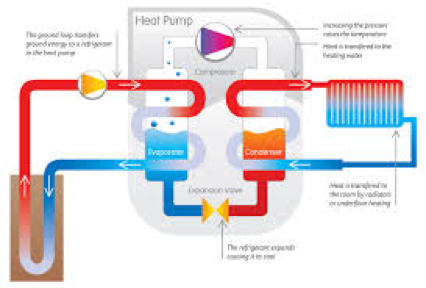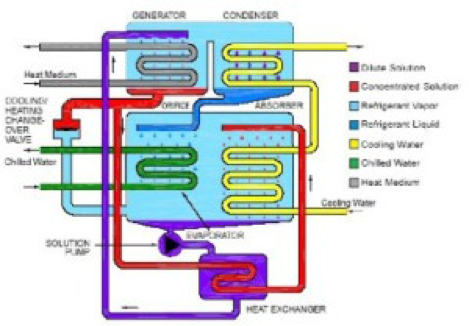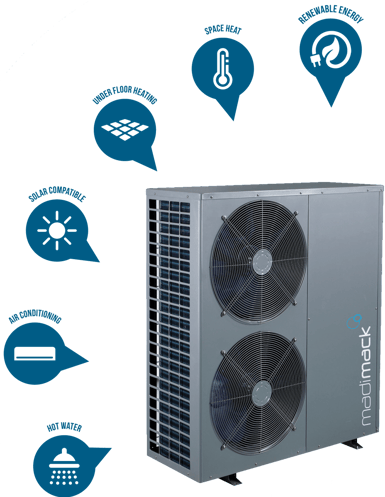A heat pump, or a heat transfer device, works similarly to a traditional air-conditioner (HVAC) Heating Ventilating and Air Conditioning unit. The heat pump moves heated air from one location to another, hence the name, but don’t let the name fool you the, “heat pump” can both heat and cool air. The way this works is to pull air from a low-temperature area and pump it into a high-temperature area from the ground or air, heating a home or building through a system of fans and heating and cooling coils with a relatively small amount of energy in comparison to a HVAC system.
An Introduction to Heat Pumps
To understand the differences between the various heat pumps it helps to become familiar with the types of systems available. First, an air-source heat pump or air-air heat pump, cycles heat from outside the home and pumps it through refrigerant-filled coils into the air ducts of the home through a fan/refrigerant system within the box unit.

A ground source heat pump takes warmth from the ground or an underground water source and pumps it into the home, or vice versa, to heat and cool the building. This works by absorbing heat filled with water from pipes buried deep within the ground. Liquid pumping pipes, as they’re called, can either be a closed or open loop system that transfers this warmth or coolness into the home.

An absorption heat pump operates on solar, propane, geothermal-heated water, or natural gas power source instead of the commonly used electricity. Typically used for larger complexes or bigger homes.

Photo Credit : http://www.your-solar-energy-home.com
A smaller sized mini-split heat pump works well in homes without air ducts by using a heated water source or space heater to warm and cool the home.
A reverse cycle chiller heat pump uses a reverse valve in the system that acts as a direction cycler taking the existing heat in your home and “reversing” it sending warm air outside allowing the heat to escape while cooling the inside. The reverse cycle chillers connect to an insulated water tank distributing the heat or cool air through a fan and coil system pumping heat through ducts or a radiant floor apparatus. Often a go-to for floor heating devices, the RCC works well in cold weather conditions. Compared to the air-source heat pump the RCC doesn’t require a backup burner to defrost the coils as the system uses heated water to defrost the coils warming air perpetually without ever blowing cold air.
With the many heat pump varieties functioning in different ways the ability to heat and cool efficiently with minimal environmental impact may well be within a property owners budget while also offering unique advantages based on specified needs alternative to traditional HVAC units.
